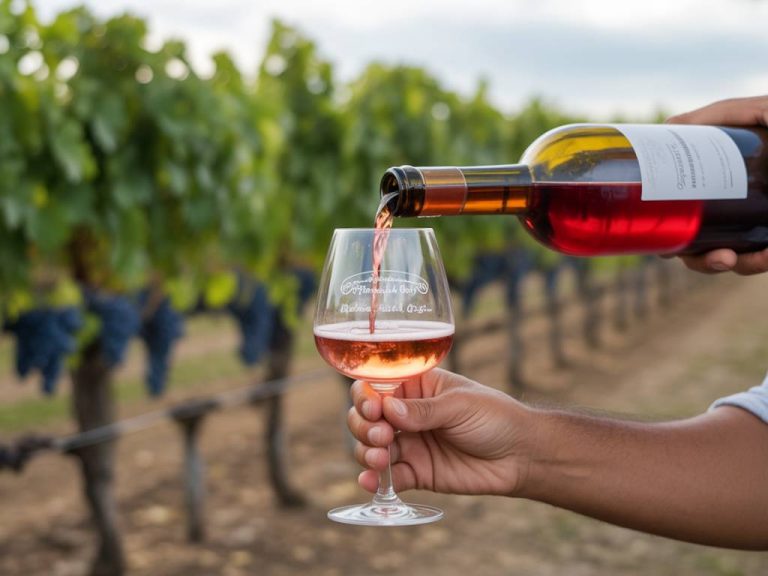
Understanding wine legs: myth vs chemistry
What Are Wine Legs, Really?
You’ve likely done it—or at least seen someone do it. You swirl a glass of wine, peer through the bowl, and watch with curiosity (or exaggerated sophistication) as streaks of liquid slowly dribble down the inside. These are the famous « wine legs, » sometimes called « tears of wine. » For some, they hint at mystery. For others, they’re an indicator of quality. But what exactly are they, and do they actually tell us something about the wine?
Let’s cut through the myths and get to the chemistry. Because yes, those streaks have more to do with physics than fanciness—and no, they don’t mean you’re drinking a “better” wine.
The Common Myths About Wine Legs
Before diving into the science, let’s address the narratives we’ve all heard over a glass or two:
- “The more legs, the higher the quality.” — Not quite.
- “Wine legs represent the wine’s age or complexity.” — Close, but still off base.
- “They indicate a high tannin level.” — Nope, tannins have nothing to do with it.
Most of these beliefs stem from the idea that a wine’s appearance is an immediate, accurate reflection of its inner greatness. While there’s some logic linking legs to alcohol content, it’s less about refinement and more about evaporation dynamics.
The Real Science: The Marangoni Effect
Wine legs are a simple result of a phenomenon called the Marangoni effect, after Italian physicist Carlo Marangoni. It’s all about surface tension—more specifically, what happens when it’s unevenly distributed.
Here’s the breakdown:
- Wine is a mix of water, alcohol (ethanol), and hundreds of dissolved compounds—from sugars to acids to phenolics.
- After swirling the glass, a thin film of wine creeps up the inside wall due to adhesion and capillary action.
- Then, the alcohol starts to evaporate faster than water (because it’s more volatile).
- This evaporation lowers surface tension at the top of the film, causing wine from below—where the surface tension is higher—to be pulled upward toward the lower-tension area.
- Eventually, gravity wins, and the droplets collapse, forming visible streaks down the inside of the glass.
Voilà—those are your wine legs. Not tears from the vineyard gods. Just capillary flow, evaporation, and surface tension doing their thing.
What Do Wine Legs Actually Tell You?
If they’re not a sign of quality or age, what can we glean from them—if anything?
Primarily, wine legs are correlated with alcohol content. The more alcohol in the wine, the more legs you’re likely to see, and the more pronounced they’ll be. That’s because higher alcohol amplifies the evaporation-difference driving the Marangoni effect.
In other words, if you swirl a 14.5% ABV Zinfandel and notice dramatic, slow-forming legs, it makes total sense. A 10.5% German Riesling? Much less leggy, and that’s equally expected.
But quality? No. You can’t “see” balance, terroir expression, or cellar potential in the droplets clinging to your glass.
Practical Implication for Wine Lovers
This doesn’t mean that observing your wine is pointless—in fact, far from it. Sight is still your first impression, and leg formation can hint at:
- Alcohol Level: As mentioned, more prominent legs suggest higher alcohol. This can foreshadow a fuller body or more heat on the palate.
- Viscosity: While not synonymous with richness, wines higher in sugar or glycerol may appear more viscous. This can play a role in the perception of weight or mouthfeel.
- Serving Temperature: Warmer wine releases alcohol faster, promoting more visible legs. That can be a cue if your wine is a touch too warm for service.
But remember, these are just that—clues—not final judgments. It’s natural to search for visual indicators when you’re excited to taste, but the true story of the wine lies on your palate, not on the inside of the glass.
Anecdote from the Tasting Room
Years ago, while consulting for a small Pinot Noir producer in Oregon, I hosted a tasting session for a group of avid collectors. One guest—let’s call him Dan—swirled the wine, watched the legs drip dramatically, and declared, “This one’s going to be a monster!”
He was expecting a big, bold profile, likely because he saw these pronounced, slow-moving tears. What followed was a delicate, floral Pinot with bright acidity and elegant structure—about as far from a « monster » as you can get.
Dan learned something that day (so did a few others): appearances can be deceiving—even in a wine glass.
Does Glass Shape Matter?
The short answer: yes, but not in the way you might think.
Certain glass shapes can accentuate or diminish the appearance of wine legs. A narrow bowled glass will contain the evaporation effects more directly compared to a wide Bordeaux-style stem, making legs potentially more visible depending on rim exposure. However, this doesn’t change the nature of the legs—it just makes them easier or harder to spot.
If you’re trying to study the Marangoni effect out of pure curiosity (or as a wine science party trick), choose a tulip-shaped glass. If you’re actually enjoying your wine, stick to a glass matched to the varietal. Taste first. Then stare into the glass if you must.
What About Fortified Wines?
Ever noticed how generously a Port or a Sherry clings to the glass?
These wines, fortified with added alcohol, regularly clock in north of 18% ABV. That’s prime territory for explosive Marangoni action. Their legs tend to form slowly, densely, and appear syrupy. That’s due not just to alcohol, but also to residual sugar and higher viscosity. The combination packs a double punch: delayed evaporation and thicker texture.
So yes, in these situations, observing legs can give you legitimate sensory cues—just not the full picture. It’s still one puzzle piece in the broader experience of appreciating wine.
How to Use Wine Legs in a Tasting Context
If you’re doing a guided tasting, especially with a group, talking about wine legs can be both educational and a bit entertaining. I often bring it up as a segue into discussing alcohol structure or fermentation techniques:
- Try comparing two wines side by side—say, a Chianti (around 13% ABV) versus a Napa Cabernet (closer to 15%). You’ll likely see a difference in leg behavior even before you taste.
- Use legs to introduce conversation around climate, ripeness, or regional style. Hotter climates often lead to riper grapes and more alcohol—which you may see reflected in the legs.
- Discuss wine temperature and service etiquette: warmer wines exaggerate legs. It’s a fun way to ease into why proper storage and chilling matter.
Just don’t fall into the trap of overanalyzing. The best use of wine legs? An entry point for deeper wine talk—not a scorecard.
Final Thoughts
Wine legs may shimmer with mystique, but once you understand the science, they become less mysterious—and, perhaps, more fascinating. Knowing the mechanics doesn’t take away the magic; on the contrary, it adds a new layer of appreciation. You’re not just watching alcohol evaporate; you’re witnessing microphysics in motion, held right there in your hand.
So the next time you swirl your glass and peer at those streaks sliding gracefully down, remember: it’s not a mark of greatness or mediocrity. It’s alcohol doing what alcohol does best—evaporating elegantly, with style.



